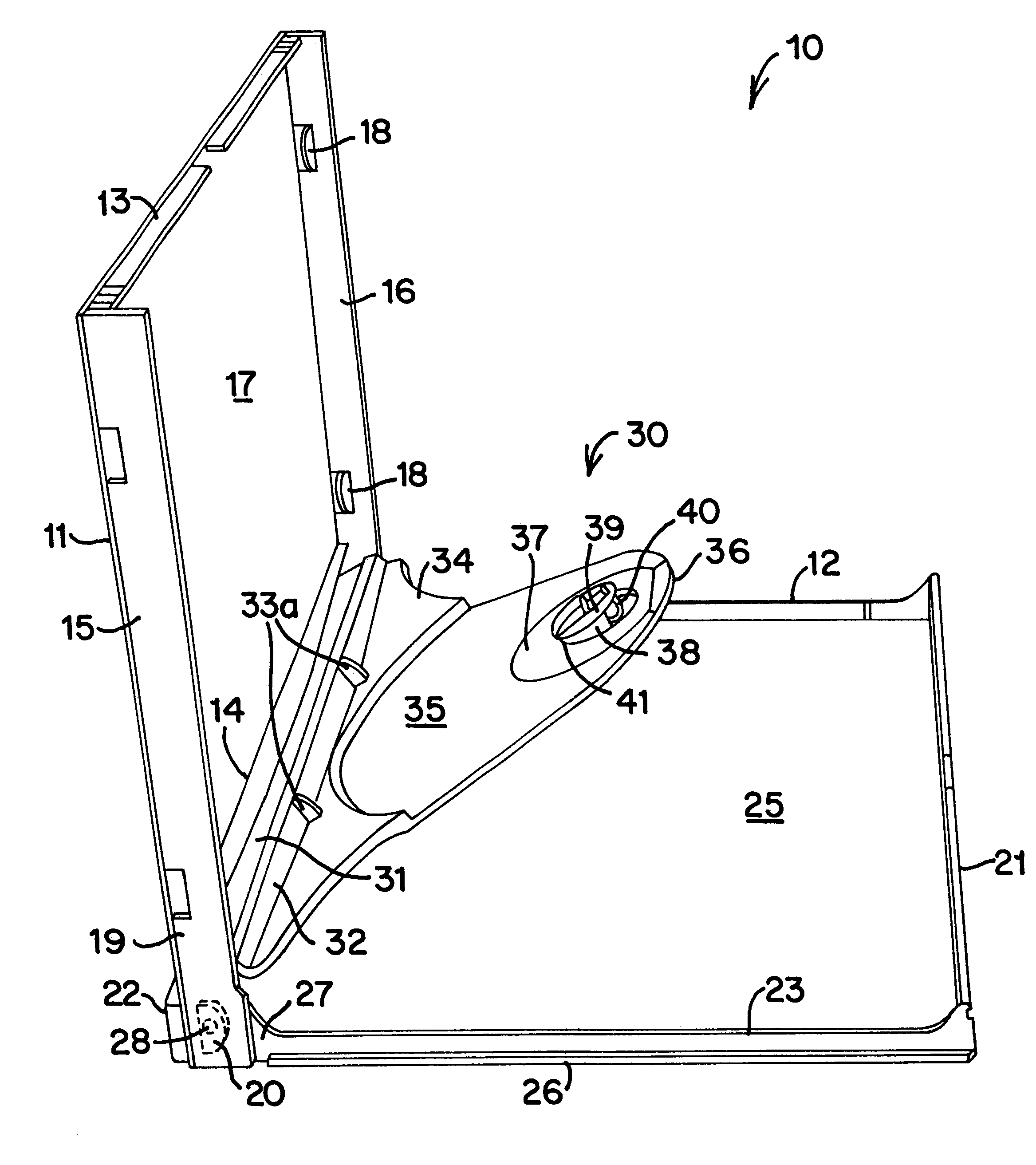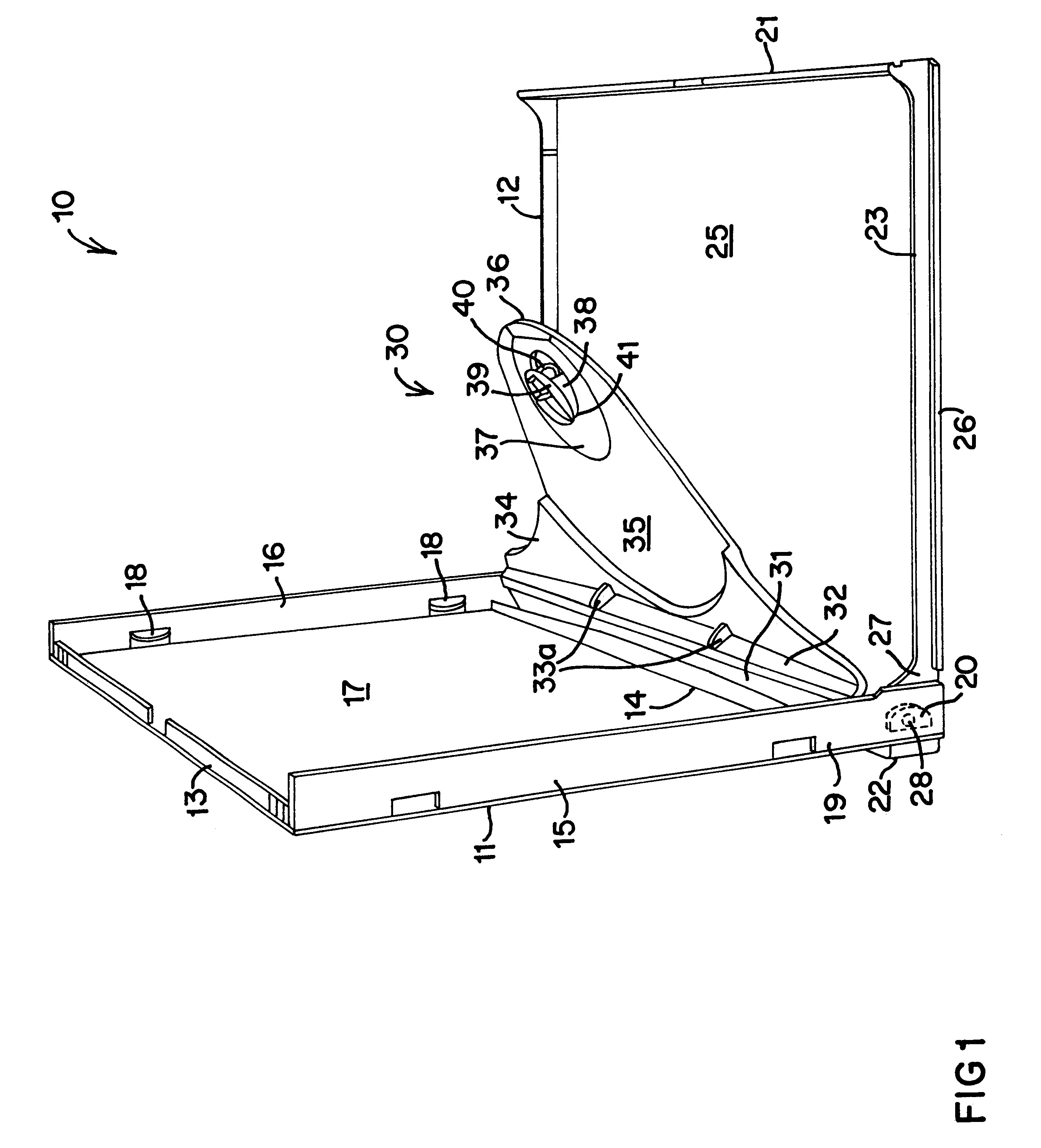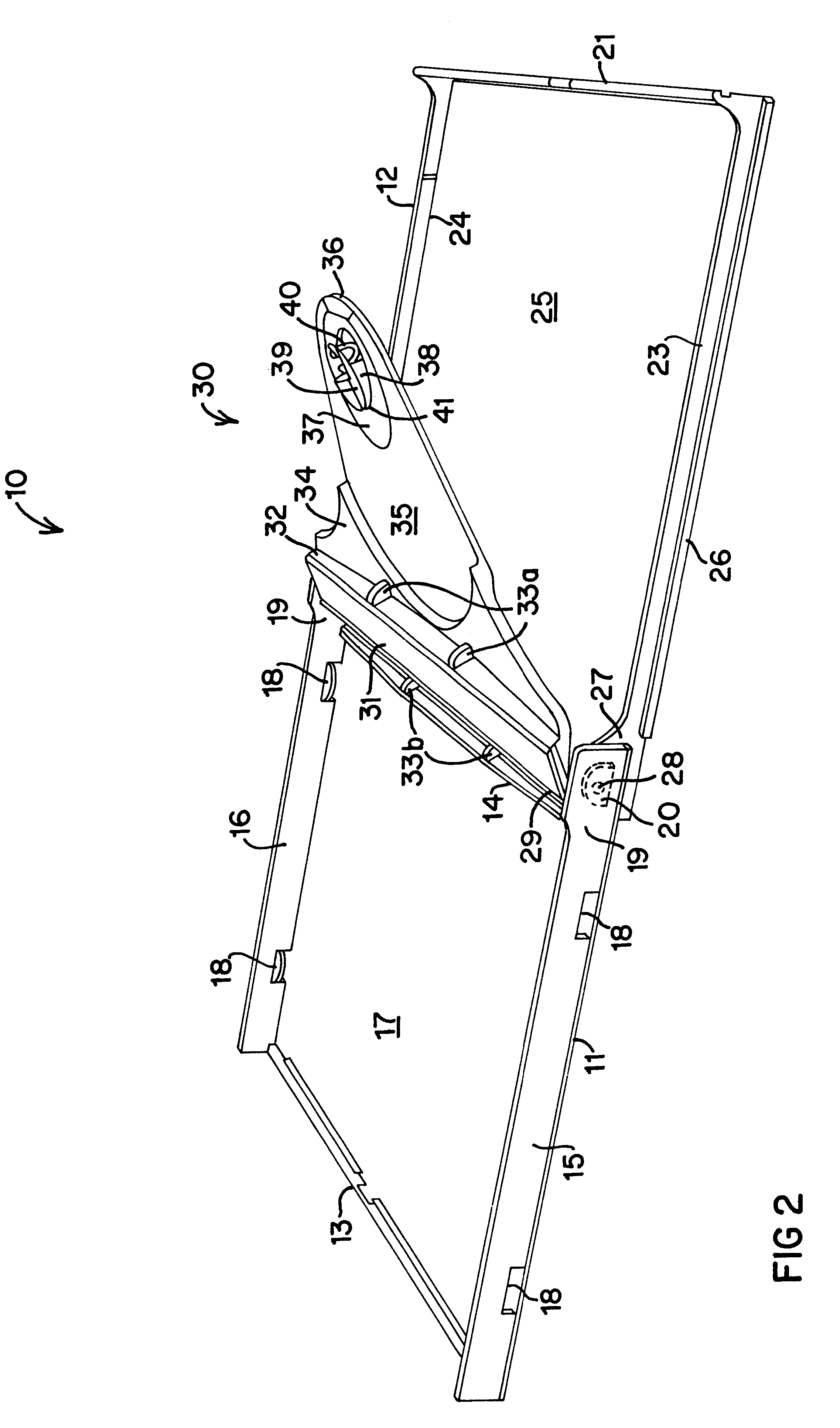Unfortunately, in the automated process of making and packaging CDs, as with most automated manufacturing processes, there are many variables than can result in product outcome vagaries.
Similarly, the CD manufacturing process and the process of moving the CD through an automated packaging process is a complex one.
As a result, it is not uncommon for these disks either to be too loosely or too tightly coupled to the hub.
That is, in those instances where the hub
diameter is slightly smaller than nominal and the aperture inside
diameter is slightly larger than normal, the disk may slip off the hub and fall unexpectedly out of the container or case upon opening.
In that situation, the user must exert considerable energy and cause a bending of the disk in order to pop it off the hub.
This flexing of the disk can cause
crazing of the disk material, as well as separation of joined disks in the case of DVDs.
Such forms of damage to the structure of the disk will result in misreading of the intended surface variations, rendering the disk unusable.
Further, for the two-layer disk structures, the bending can cause a shifting of those
layers with respect to one another.
This can lead to the two being out of concentricity with one another, thereby affecting the aperture dimensions and causing surface variation misreadings.
While the tongue of the Gelardi container provides a desirable solution to the problem of the suitability of the fit between the hub and the CD, there are several deficiencies in that design that make it less than commercially desirable.
First, the Gelardi container does not lend itself to the standard automated disk packaging processes in existence.
The maximum distance that the holder moves away from the base is insufficient to allow standard automated
graphics insertion equipment to place information materials into the base of the container.
Such a significant modification to the process is not possible.
Secondly, the cost to manufacture the relatively complex Gelardi container renders it difficult to provide in a
mass-market environment.
The
cost effectiveness of creating a commercially viable product of multiple parts is generally compromised as a function of the number of parts, the variability of their dimensions during fabrication, and with the increase of possible failure at the multiple connection locations.
Finally, the interface
coupling between the lid and the base of the Gelardi container limits the extent to which the lid may be opened away from the base.
Once the lid has been removed, it can be difficult for the user to re-apply it and, in some instances, may not attempt to, thereby exposing the disk retained within to a greater potential for damage.
Unfortunately, this transparent material is quite brittle and can either crack under a variety of
stress conditions--such as by banging against a fixed surface, or by being dropped.
In addition, even if the brittle case does not fail, its rigidity can translate
impact conditions directly to the disk contained therein, thereby causing its failure.
This is of concern in the case of a too-tight fit between the disk and the hub, particularly, for a double-density and / or double-sided disk having many more pits and peaks subject to structural damage upon bending of the disk to remove it from the hub.
Apart from that, it is not particularly desirable to have a variety of disk containers as it makes it much more difficult to establish standardized disk packaging equipment and processes.
Also, what is needed is a disk container having a lid-and-base arrangement that limits the separation of those components under expected use conditions.
The arrangement of a
cam and a capturing slot also limits the opportunity of the lid to become dislodged from the base under a wide array of actual-use conditions.
 Login to View More
Login to View More  Login to View More
Login to View More 


